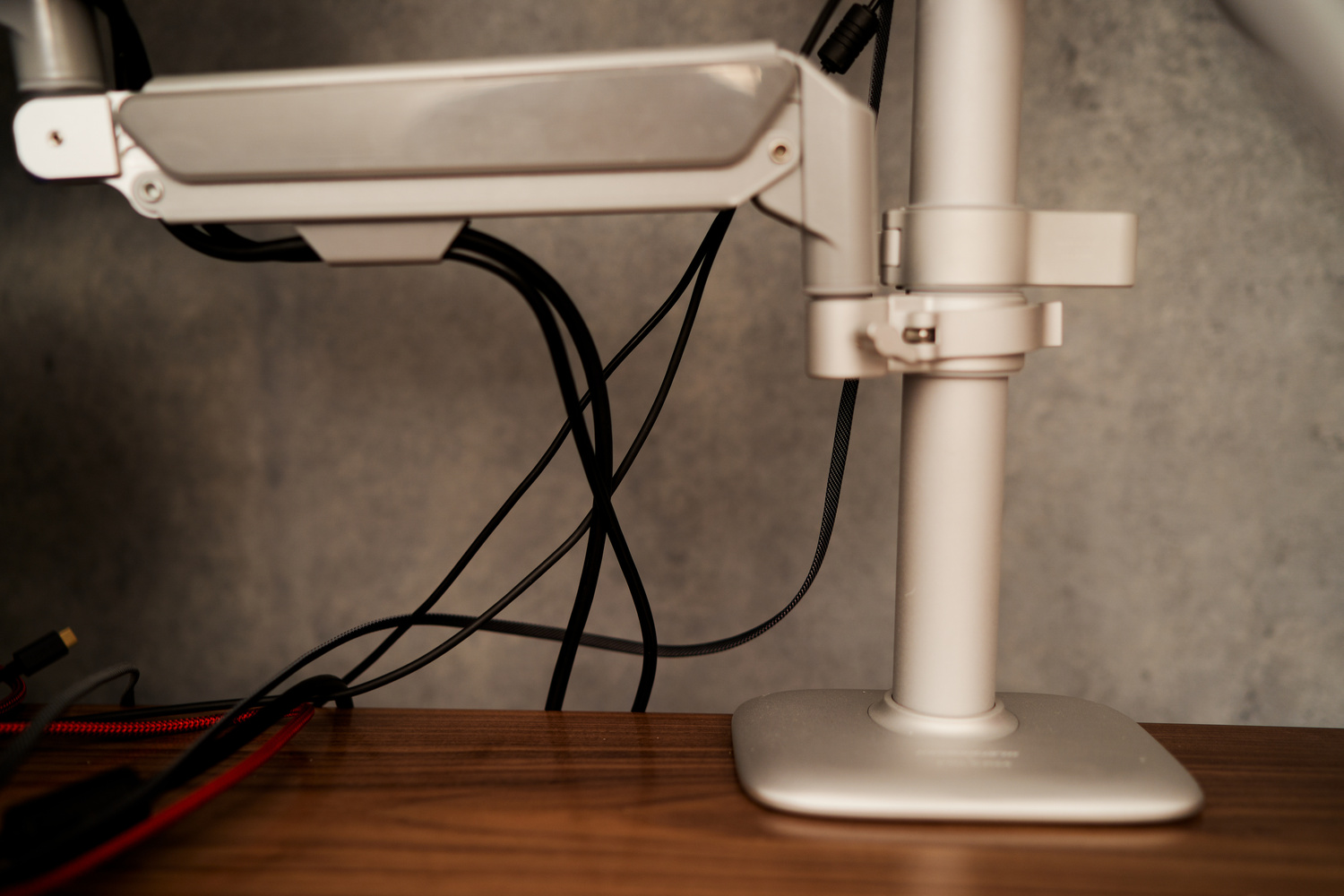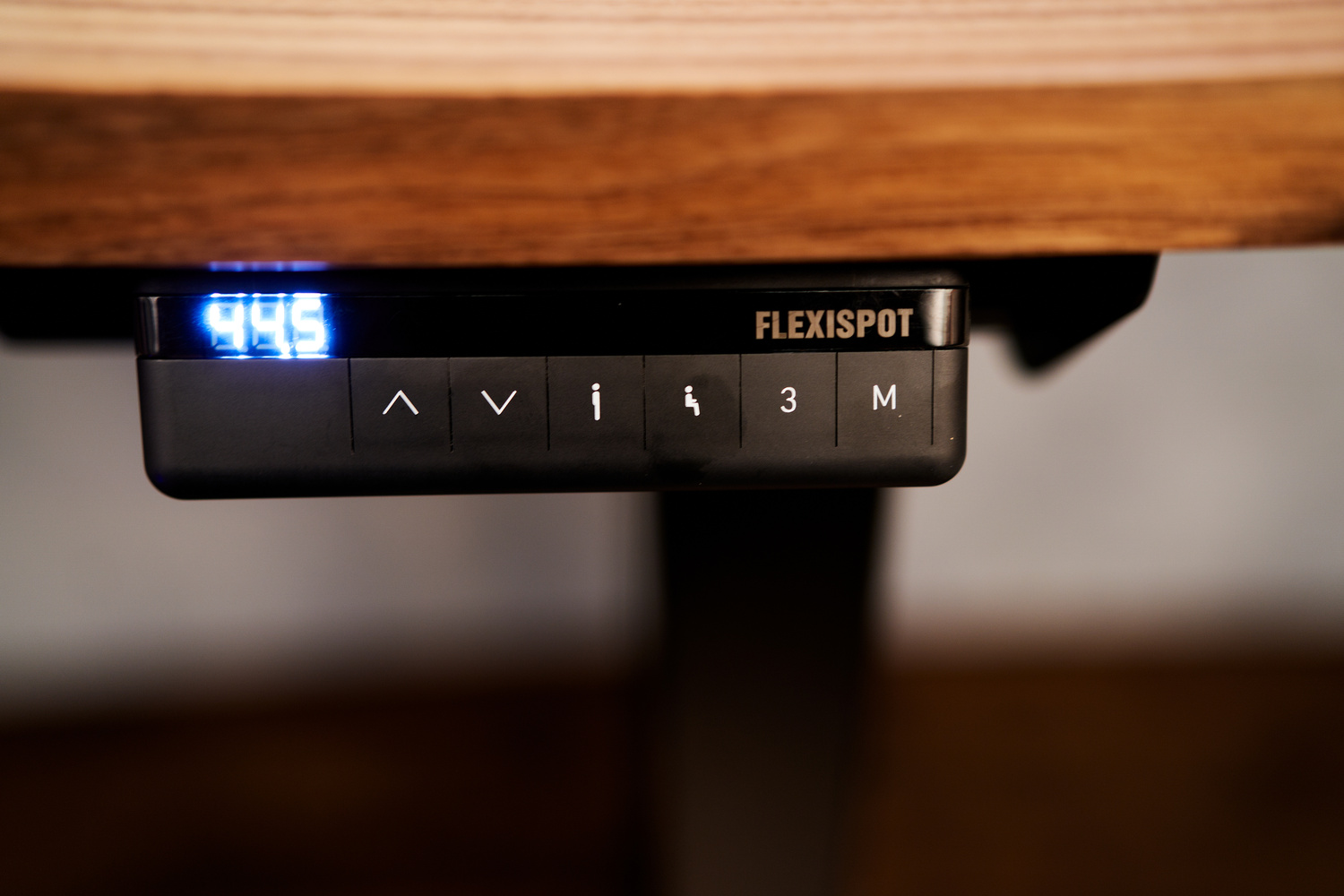[ad_1]
Like a lot of creatives, finding that perfect desk setup is sort of like searching for the holy grail. But after a lot of searching, I think I found mine.
To start, I want to have my desk set up in a way that I can do a handful of certain activities. The primary task is editing weddings along with other wedding photography-related duties (think emails, website work, etc.). The next task I need to fulfill is creating content: recording for Patreon, recording for YouTube, and conducting mentoring calls. The last of my desired tasks is just general consumption of content, from photography education to my hobby as a chess player (average at best, but I still enjoy it).
Now, in the past, all these various tasks required different setups. Sometimes, I needed a camera and mic; other times, I didn’t. When I didn’t need certain gear, then that gear would end up just being clutter that got in the way, or it was extra time to take down and set up again when needed. I also wanted two different computers because I like the separation between work and play. This also gives me the ability to do certain tasks on one computer without slowing down what was going on with the other computer. Essentially, I can multitask a bit more efficiently.

The Falcam Geartree
The main issue I had with the various setups was the clutter it left on my desk, along with the potential setup and teardown time associated with trying to reduce that. Enter the Falcam Geartree. What this does is give me the ability to get everything I need up off of the desk, all while being close and easy to move into position or out of the way.
While this Geartree setup can be configured in many different ways, what I have is the Geartree desk stand base along with four different attachments. So, the desk stand base just clamps anywhere on your desk and by itself is just a pole. From here, you use a Geartree clamp to add whatever elements you need or want.

I have two full-motion swivel arms and a VESA Mount Adaptor Pro for my monitor. This allows me to have a ton of flexibility in where my monitor can be placed as well as how high and low I can get it. This is great because I have an adjustable desk (more on that later), so it’s nice to be able to adjust where my monitor is based on if I’m standing or sitting. Then, the VESA Mount Pro also gives me the ability to rotate my monitor for any instances where it makes more sense to have a vertical display rather than the traditional horizontal orientation. 
Next up, I have two setups that each have a full-motion swivel arm paired with a basic extension grip arm. I use one of these setups to attach a Magmod Magshoe with a 24-inch Magbox. Inside the softbox, I have an old 1×1 Westcot Flexlight that I wasn’t using. This is my primary light when recording as well as for Zoom calls. The next identical setup has a three-way roll head attached and is where I have my Sony a7 III attached. As you’d expect, this is what I use to record my videos as well as have Zoom calls and mentoring calls.

Lastly, I have an articulated boom arm attached with a Yeti Blue mic. I’m not overly in love with the microphone itself, but it gives decent quality for the price until I can decide on what mic I want to replace it with. But the boom arm gives me the ability to precisely place the mic where I want it with very little effort.
 The best thing about this Geartree setup though is just how easy it was to set up as well as how much flexibility it gives. I can go from recording and using every piece of gear on the tree to having everything out of the way in a matter of seconds. My only gripe with everything is the cable management aspect. If you get all the cables tight and tucked out of the way, then those tight cables will be pulled on and limit you as you go to extend an arm. If you get the cable length set when things are fully extended, then you get slack when you have the arms tucked away. I might end up getting a set of coiled cables that can extend and retract as needed.
The best thing about this Geartree setup though is just how easy it was to set up as well as how much flexibility it gives. I can go from recording and using every piece of gear on the tree to having everything out of the way in a matter of seconds. My only gripe with everything is the cable management aspect. If you get all the cables tight and tucked out of the way, then those tight cables will be pulled on and limit you as you go to extend an arm. If you get the cable length set when things are fully extended, then you get slack when you have the arms tucked away. I might end up getting a set of coiled cables that can extend and retract as needed.

Also, the way the cables travel down the pole is not super great. The Geartree came with some Velcro wraps to hold everything, but I’m not a fan of the way they look wrapped around the pole. So, I am still trying to decide on what to use that is a little more discreet. I wish there was a clever way to have the cable run down the inside of the pole and then out of the base. 
But even with these minor grievances, I absolutely love how much gear I can have seamlessly attached to this pole. I even have room for more gear or accessories if I see fit in the future.
The Desk
The desk I chose is the FlexiSpot Odin 4-Leg standing desk E7Q. I also went with a dark walnut desktop. This setup allows me to go from sitting to standing super easily. But the main thing I like is how low the desk can get so that I can sit on the ground. I also wanted to make sure the desk could get high enough because I’ll push my Schwinn Carbon Blue bike under it and ride while I work sometimes. So, in all, just the overall flexibility is why I went with this particular desk. Also, not a lot of adjustable desks have a four-leg design, and I much prefer this look over the more traditional single-leg with an almost cantilever top. I have another desk in this single-leg setup, and this four-legged desk is just all around more sturdy and secure as a whole. 
When I got this desk, I also added on the D7L Single Monitor Arm. While my main monitor when working is either the monitor attached to the gear tree or my laptop screen, this second arm I use for an additional monitor that is attached to a second computer. I chose this setup because I can have one side of the desk for work and the other for multitasking or play. It’s also super easy to swing this additional monitor completely out of the way when I don’t need it, or it can come right up against my main monitor when I want to have it closer.

The Monitor
My main monitor is the Viewsonic VP2776 monitor. This is a 27-inch 4L monitor that has all the various connectivity options you may need. Options include HDMI, DisplayPort, Mini DisplayPort, and USB-C, allowing for seamless integration with various devices. But the main feature I wanted is the ability to have hardware calibration support, which enables precise color calibration for consistent and accurate results when editing images for print. The monitor also has accurate color reproduction and a wide color gamut, encompassing sRGB, Rec.709, and Adobe RGB color spaces. While I don’t do a ton of video work or graphic design work, I do like to dabble, and it’s nice knowing that my monitor won’t be a limiting factor in what I decide to do.
The Keyboard

This is my primary touchpoint for everything I do on the desk. So, I wanted something with robust features that would give me more than just a good typing experience. For this, I went with the NuPhy Field75 keyboard. This keyboard has a few key features that help speed up my workflow. One is that there are a set of custom keys along the side and bottom that I can use for anything I want. From here, every single key is programmable. So, I can have some of the custom keys set up to apply a preset within Capture One. I also have the tilde key (which I never use) set up to be a “0” key. This way, when I’m culling and I star an image that I later want to set back to 0, I don’t have to move either of my hands in order to press the 0 key. I also have the home and end keys on the side set up to be left and right arrows so that I can hold my keyboard like a controller and cull while I ride my bike while keeping my hands in a more comfortable position. The keyboard also allows you to assign macros to a key, so the functionality you can have is pretty vast.
Another feature I really love is the little dial switch where I can easily switch the keyboard from Wi-Fi, to Bluetooth, to USB connection. This simple setup lets me have the keyboard connected to my main computer with one connection and then to my second computer with a different connection type. So, I can now move my keyboard from one computer to another with the turn of a switch.

Conclusion
While desk setups can tend to change over time as workflows change, I feel like this is the most solid base I have come across. The Falcam Geartree alone has dramatically changed the way I view a workspace’s potential. The ease of changing from one setup to the next has already saved me multiple hours while still leaving me with a clean and clutter-free workspace. But I also know the amount of desk accessories on the market is never-ending. What are some desk items you can’t live without? Drop them in the comments.
[ad_2]
Original Source Link